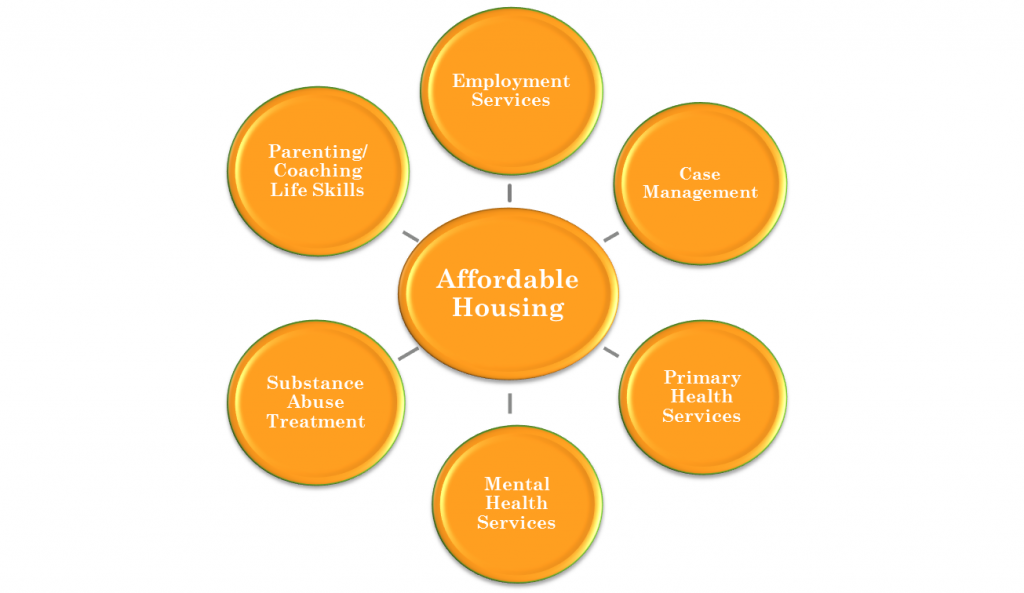What is Supportive Housing?
Supportive housing is a combination of affordable housing and supportive services designed to help vulnerable individuals and families use stable housing as a platform for health, recovery and personal growth. Supportive housing can be any type of independent housing that meets the needs of tenants and is integrated within the neighborhood or community. This may include an apartment, duplex or single family home. Services available in supportive housing will vary depending on individual preferences and needs, but can include case management, mental health services, primary health services, substance abuse treatment, employment services and parenting skills.
Who Lives in Supportive Housing?
Supportive housing is designed to serve those unable to stay housed without a wide range of supportive services. Individuals or families living in supportive housing may have a long history of homelessness or stays in institutions. They often face one or more persistent obstacles to maintaining housing such as serious mental illness, substance use disorders or chronic medical problems. Though services help tenants maintain stability, being housed is an essential first step in addressing conditions that often have gone untreated for many years. The combination of housing and supportive services creates a synergy that allows tenants to take steps toward recovery and independence.
Key Characteristics of Quality Supportive Housing
Quality supportive housing projects are as diverse as the communities in which they are located but all supportive housing:
- Targets households whose head of household is experiencing homelessness, at-risk of homelessness, or is inappropriately staying in an institution. They may also be facing multiple barriers to employment and housing stability, including mental illness, substance use and/or other disabling or chronic health conditions.
- Is affordable meaning the tenant household ideally pays no more than 30% of its household income toward rent.
- Provides tenant households with a lease or sublease identical to a non-supportive housing tenant - with no limits on length of tenancy, as long as lease terms and conditions are met.
- Proactively engages members of the tenant household with a flexible and comprehensive array of supportive services, without requiring participation in services as a condition of ongoing tenancy.
- Effectively coordinates among key partners to address issues resulting from substance use, mental health and other crises, with a focus on fostering housing stability.
- Supports tenants in connecting with community-based resources and activities while building strong social support networks.
Does Supportive Housing Work?
Research has repeatedly shown that the lives of the individuals and families improve in supportive housing. Supportive housing also improves outcomes and generates cost savings for public systems, while benefiting communities.
- Supportive Housing Improves Lives
- Supportive housing has positive effects on housing stability, employment, mental and physical health, and school attendance. People in supportive housing live more stable and productive lives.
- Supportive Housing Generates Significant Cost Savings to Public Systems
- Cost studies from across the country have found that supportive housing results in tenants’ decreased use of homeless shelters, hospitals, emergency rooms, jails and prisons.
- Supportive Housing Benefits Communities
- Evidence shows that supportive housing benefits communities by improving the safety of neighborhoods, beautifying city blocks with new or rehabilitated properties, and increasing or stabilizing property values over time.
Next: Determine if Supportive Housing is Right for Your Organization
Go to the Quality Toolkit Table of Contents.



